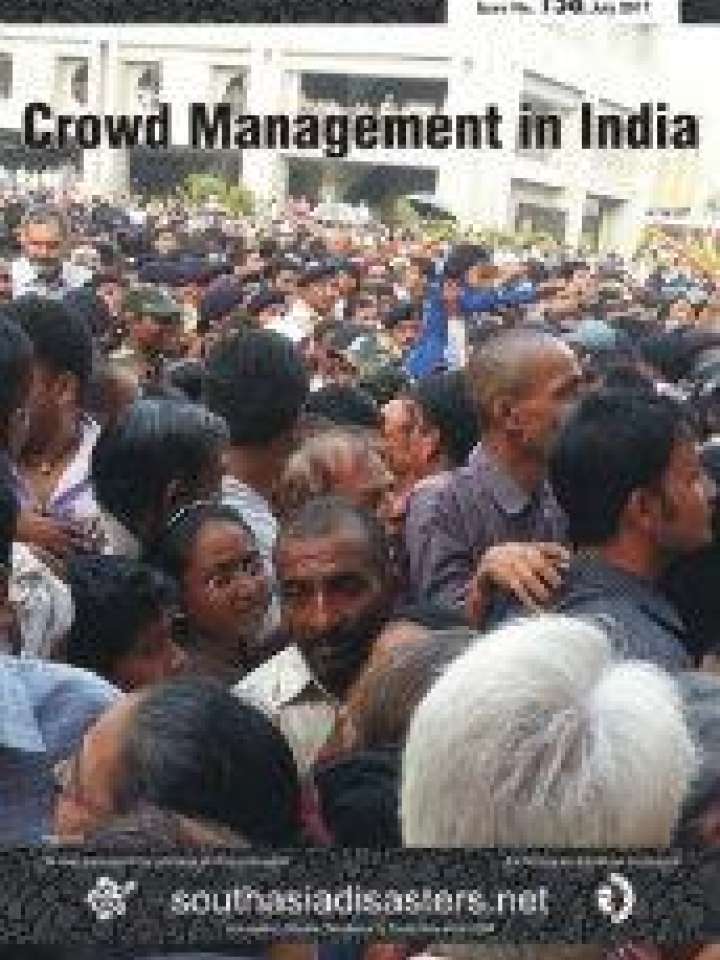Crowd management in India
Southasiadisasters.net issue no. 158, July 2017
This issue focuses on the theme of controlling and managing crowds at mass gatherings in India. It discusses important issues related with crowd management, ranging from the causes of stampedes and what can be done to prevent them. Behavioral factors like the high tolerance for crowded spaces among Indians leading to higher cases of stampedes have also been discussed in the issue.
Stampedes have been a recurring phenomenon in India. Tragedies of people being trampled to death have taken place at religious gatherings, mass processions, election rallies and even at music concerts. According to the National Crime Records Bureau (NCRB), a total of 3216 incidents of stampede have taken place in India between 2001 and 2014, leading to 2421 casualties. Moreover, 79% of all such stampedes in India occur at places of worship. The high incidence of such stampedes in India highlights the need for effective crowd management in the country. At the institutional level, stampedes are often seen as isolated events caused by the excesses of a frenzied crowd to be dealt by successive governments by offering compensation to the families of victims.
This issue tries to build a new narrative around stampedes attributing them to systemic gaps in the country's crowd management capacities and suggest ways of bridging this gap. This issue's contents includes: (i) Understanding Crowds; (ii) BSDMA and Crowd Management; (iii) Crowd sourced Potential for Disaster; (iv) Planning and Recovery in Nepal: Key Local Concepts; (v) Drought Policy in India: An Alternative Paradigm; (vi) Maha Kumbh Allahabad – Lesson and Learning for India; (vii) Crowd Management in Dahod District, Gujarat; (viii) Bhadrapadi Fair in Ambaji and (ix) The Necessity of Crowd Management at Religious Places.
Explore further
